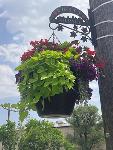How to keep yourself warm and safe in these cold, cold times

31 Division Community Bulletin
Decrease risk of frostbite & hypothermia1. Wear cold weather appropriate clothing such as gloves/mittens, hats, scarves and snow boots. Dress in several layers of loose-fitting clothing, and cover your face and mouth if possible
2. Be aware of the wind chill factor. Wind can cause body-heat loss
3. Stay dry, and if you become wet, remove wet clothing immediately
4. Limit your time outdoors
5. Do not ignore shivering. It’s an important first sign that the body is losing heat. Persistent shivering is a signal to return indoors
6. If the heat in your home doesn’t work properly, contact your local contractor and or move to a warm facility
Be aware of electric hazards1. If snow/water is present anywhere near electrical circuits and electrical equipment, turn off the power at the main breaker or fuse on the service panel. Do not turn the power back on until electrical equipment has been inspected by a qualified electrician
2. Never touch electrical equipment if the ground is wet, unless you are certain that the power is off
3. Never touch a downed power line
4. When using gasoline and diesel generators to supply power to a building, switch the main breaker or fuse on the service panel to the off position before starting the generator
5. If clearing or other work must be performed near a downed power line, contact the utility company to discuss de-energizing and grounding or shielding of power lines
6. Extreme caution is necessary when moving ladders and other equipment near overhead power lines to avoid inadvertent contact
Avoid excessive exertion1. Cold weather puts an extra strain on the heart. If you have heart disease or high blood pressure, follow your doctor’s advice about shoveling snow or performing other hard work in the cold. Otherwise, if you have to do heavy outdoor chores dress warmly and work slowly. Remember, your body is already working hard just to stay warm, so don’t overdo it
2. Reduce Risk of Cold Temperature Injuries
3. While cleaning up after the snowstorm, you are at risk for developing health problems from working in cold environments
4. Wear rubber boots, ensure that clothing and boots have adequate insulation, dress in layers to help keep in body heat, take frequent breaks out of the snow/water and change into dry clothing when possible.
Did You Know?More than 180 languages and dialects are spoken in Toronto.
The city is home to 5,600 km of roads, controlled by 2,283 traffic signals.
The Toronto Transit Commission was established in 1921, and annually offers 540 million rides.
The waterfront is 76.5 metres above sea level and has a 43 km long shoreline.
307 km of rivers and creeks exist in the city.














